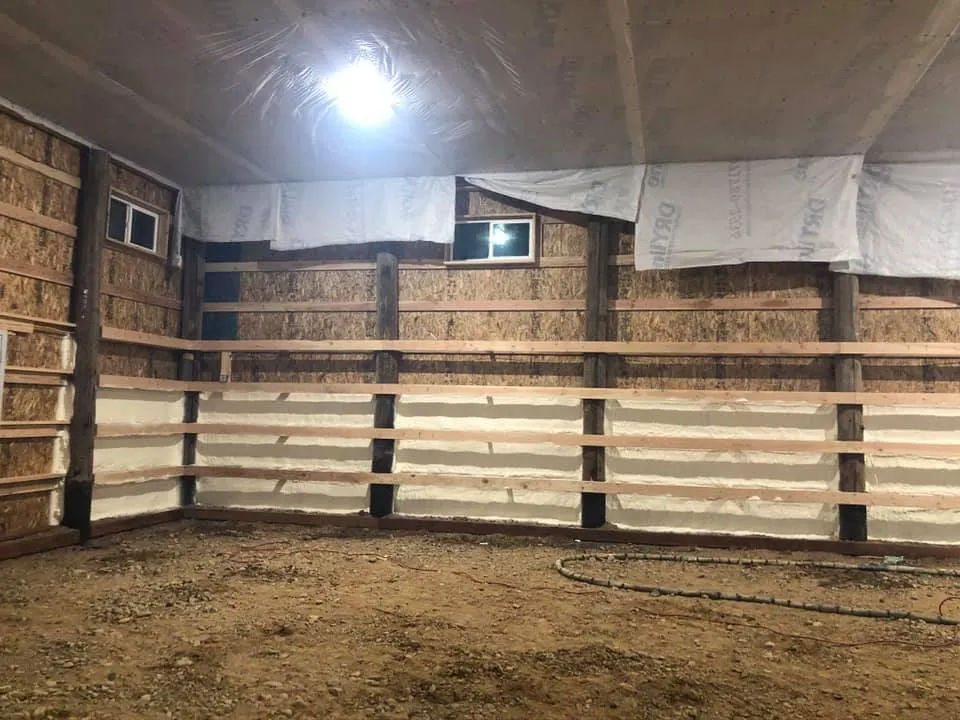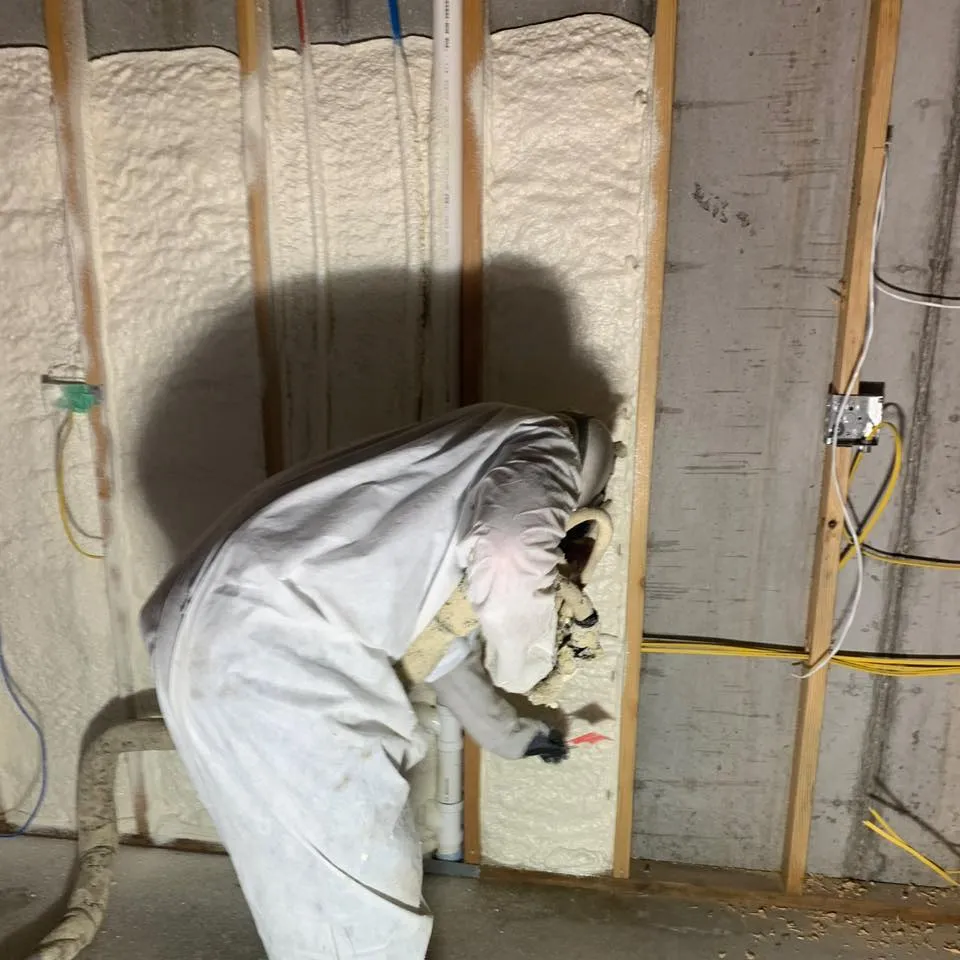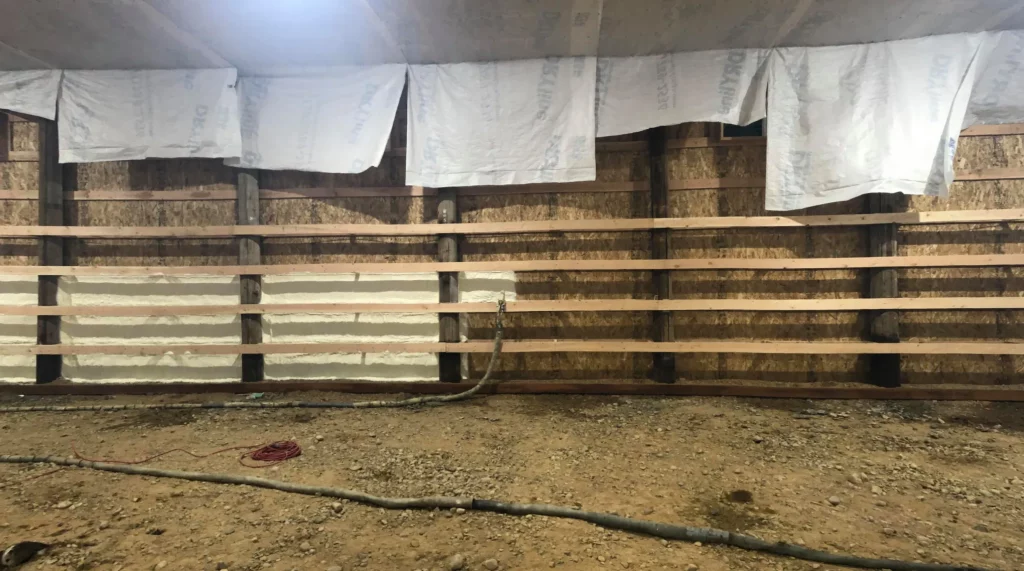
If you’re looking to make your home more comfortable year-round while cutting down on energy bills, insulation plays a big role. Many homeowners face drafts, uneven temperatures, and rising utility costs, but open-cell spray foam insulation offers a smart way to tackle these issues. This guide covers everything you need to know about it, from the basics to practical applications, so you can decide if it’s right for your space.
Open-cell spray foam is a type of insulation that expands to fill gaps and cracks in walls, attics, and floors. Made from polyurethane, it creates a foam with an open structure that traps air, providing excellent thermal resistance. Unlike traditional materials like fiberglass batts, it adheres directly to surfaces and seals air leaks, which can improve indoor air quality and reduce moisture problems. According to the U.S. Department of Energy, proper insulation like spray foam can lower heating and cooling costs by up to 20% in many homes.
Why does this matter? In a world where energy efficiency is key to both comfort and savings, choosing the right insulation ensures your home stays warm in winter and cool in summer without overworking your HVAC system. It’s especially useful in older homes with irregular framing or in humid climates where moisture control is essential. This isn’t just about saving money; it’s about creating a healthier living environment.
Over the years, professionals have installed this material in thousands of projects, learning what works best in real conditions. This guide draws from that hands-on knowledge to give you reliable advice. Here’s what you’ll find ahead:
By the end, you’ll have the information to make informed choices for your home or building project. To start, let’s get into the details, beginning with the fundamentals of open-cell spray foam insulation.
Open-cell spray foam starts as two liquid components: a polyol resin and an isocyanate hardener. When mixed at the spray gun, they react and expand rapidly – up to 100 times their original volume – into a soft, spongy material. The “open-cell” part refers to its cellular structure, where the bubbles are connected and filled with air, giving it a density of about 0.5 pounds per cubic foot.
This low-density design makes it lightweight and flexible, ideal for areas that might shift slightly, like rim joists or cathedral ceilings. It also absorbs sound better than denser insulations, helping quiet down noisy environments.
You might wonder how it compares to basic insulation. Traditional fiberglass or cellulose often leaves air gaps, leading to energy loss. Open-cell foam expands to seal those spots automatically. Studies from the Oak Ridge National Laboratory show it can achieve R-values of 3.5 to 4 per inch, meaning it resists heat flow effectively without needing as much thickness.
One market stat to consider: The global spray foam insulation market reached $2.5 billion in 2022 and is projected to grow at 6.5% annually through 2030, driven by demand for energy-efficient building materials, per a report from Grand View Research.
Homeowners often pick open-cell foam for its ability to handle both insulation and air sealing in one go. It blocks drafts that sneak through tiny cracks, which can account for 30% of a home’s energy loss, as noted by ENERGY STAR.
First, energy savings stand out. By creating a tight building envelope, it reduces the workload on your furnace or AC. In one case, a family in a drafty 1950s ranch house saw their heating bills drop by 25% after adding open-cell foam to the attic. Second, it improves comfort. The even temperature distribution means fewer hot and cold spots, so you feel cozy without cranking up the thermostat.
Moisture management is another plus. Open-cell foam is vapor-permeable, allowing trapped moisture to escape rather than condense inside walls. This helps prevent mold growth in humid areas like basements. Plus, its sound-dampening properties cut down on outside noise – think less traffic rumble or neighbor chatter seeping in.
From an environmental angle, it lasts decades without degrading, reducing the need for replacements. A study by the Spray Polyurethane Foam Alliance highlights how it contributes to lower carbon footprints through better efficiency.
Key Takeaways:
Expert Tip: If you’re in a cold climate, combine open-cell foam with a vapor barrier on the warm side to optimize performance without risking condensation. Understanding the science behind this material shows how it delivers such reliable benefits.

The science behind open-cell foam comes down to its chemical reaction. When the two liquids meet, they form a polymer matrix that traps billions of tiny air pockets. These pockets act like a barrier to heat transfer – conduction, convection, and radiation all get minimized.
Convection, where air moves and carries heat, stops because the foam fills every nook. Conduction slows as heat struggles to pass through the insulating air cells. Radiation, or heat waves, gets reflected by the foam’s surface. This combo gives it a high R-value in a thin layer.
In practice, it adheres to wood, concrete, or metal without sagging. Once cured, which takes just seconds, it’s ready to insulate. Unlike rigid boards, it doesn’t require cutting or fitting; the spray gun handles that.
For deeper reading on the chemistry, check resources from the Polyurethane Foam Association, which explains the safe, controlled expansion process used by certified installers.
Not all spray foams are the same. Open-cell is softer and airier, while closed-cell is denser and more rigid. Choosing between them depends on your needs, like moisture levels or structural support.
Here’s a quick comparison table to break it down:
| Feature | Open-Cell Spray Foam | Closed-Cell Spray Foam |
|---|---|---|
| Density | 0.5 lb/ft³ (low) | 2.0 lb/ft³ (high) |
| R-Value per Inch | 3.5-4.0 | 6.0-7.0 |
| Cost per Board Foot | $0.40-$0.60 | $0.80-$1.20 |
| Vapor Permeability | High (allows moisture escape) | Low (acts as barrier) |
| Sound Absorption | Excellent | Fair |
| Best For | Attics, walls in humid areas | Basements, roofs needing rigidity |
Data drawn from guidelines by the International Code Council, which sets standards for building materials.
Open-cell shines in soundproofing and cost, but closed-cell provides better moisture resistance and adds some structural strength. If budget is tight, open-cell often wins for residential use.
Expert Tip: Test your space’s humidity before deciding – open-cell works best below 50% relative humidity to avoid any moisture buildup issues.
Installing open-cell spray foam requires precision to ensure safety and effectiveness. Professionals follow a structured approach, starting with preparation.
Safety note: Isocyanates can irritate skin and lungs, so use respirators and suits. The Occupational Safety and Health Administration outlines these protocols.
Key Takeaways:
Expert Tip: In uneven walls, spray from bottom to top to let gravity help with settling and avoid drips.
Open-cell foam fits a variety of spots where flexibility and air sealing matter most. In attics, it fills around pipes and wiring without compressing over time. For interior walls, it dampens sound between rooms, perfect for home offices or bedrooms.
It’s great for rim joists in crawl spaces, sealing band joists against cold air infiltration. In renovations, it works over existing insulation to boost performance without removal. Avoid it in exterior walls in very cold climates unless paired with other barriers.
Real-world example: A school added open-cell to ceilings and saw noise levels drop by 15 decibels, per acoustic testing. Market data shows residential use accounts for 60% of spray foam applications, according to MarketsandMarkets.
Other uses include cathedral ceilings for sloped roofs and knee walls in finished attics. Its lightweight nature means no added load on structures.
No insulation is perfect. Open-cell foam can absorb water if exposed, potentially leading to sagging in extreme floods – though it dries out without mold if ventilated. Off-gassing during install releases VOCs, but cured foam is low-emission.
Cost might seem high upfront, but it pays off long-term. To overcome these: Choose certified installers and ensure proper drainage in wet areas. For VOC concerns, air out the space post-install.
Another issue: It doesn’t provide a vapor barrier, so in moist climates, add one separately. Research from Building Science Corporation recommends hybrid systems for mixed conditions.
Expert Tip: Get a blower door test before and after to quantify air sealing improvements and verify the job’s quality.
Expect to pay $1.00 to $2.00 per board foot installed, covering materials and labor. For a 1,000 sq ft attic, that’s $3,000-$6,000. Factors like access and thickness affect the price.
ROI comes quickly through savings. ENERGY STAR estimates payback in 3-5 years with 15-20% bill reductions. One stat: Homes with spray foam use 40% less energy for heating, per a Lawrence Berkeley National Laboratory study.
Here’s a simple ROI table:
| Project Size | Upfront Cost | Annual Savings | Payback Period |
|---|---|---|---|
| Small (500 sq ft) | $2,000 | $300 | 6-7 years |
| Medium (1,500 sq ft) | $5,000 | $800 | 4-5 years |
| Large (3,000 sq ft) | $10,000 | $1,500 | 3-4 years |
Incentives like federal tax credits up to $1,200 can shorten that. Overall, it boosts home value by 5-7% in energy-conscious markets.
Once installed, open-cell foam needs little upkeep. Inspect annually for damage from pests or water. It resists settling and maintains R-value for 25-50 years.
Clean surfaces with mild soap if needed, but avoid harsh chemicals. In attics, ensure ventilation prevents overheating. If issues arise, like exposed areas, cover with drywall for protection.
Longevity data from the Spray Polyurethane Foam Alliance shows no significant degradation after 20 years in field tests.
Expert Tip: Schedule thermal imaging every 5 years to spot hidden air leaks early and keep efficiency high.
Advancements focus on eco-friendliness. Bio-based foams use plant oils to reduce petroleum content, cutting emissions. Low-GWP blowing agents replace older ones, aligning with EPA regulations.
Smart integration with home automation monitors insulation performance via sensors. 3D printing tech for custom applications is on the horizon, making installs faster.
Market growth: Spray foam adoption in green buildings rose 25% from 2020-2023, per Dodge Data & Analytics. As these innovations develop, many homeowners still have practical questions about open-cell foam today – let’s cover the most common ones next.

Yes, once cured, it emits very low levels of VOCs and doesn’t support mold growth if kept dry. It’s often better for air quality than fiberglass, which can harbor dust.
DIY kits are available for small jobs, but pros recommend professional installation for even coverage and safety. Mistakes can lead to poor performance or health risks.
Aim for 5-7 inches in attics for R-21 to R-28, depending on climate. Walls typically need 3-5 inches. Check local codes for minimums.
It provides minimal rigidity compared to closed-cell. Use it for insulation, not load-bearing reinforcement.
The foam itself burns, but installations include flame-retardant coatings or barriers like drywall to meet fire codes.
The ideal range is 60-80°F with low humidity. Extreme cold or heat can alter expansion – schedule for mild weather.
You’ve now got a full picture of open-cell spray foam: its structure, benefits like energy savings and sound control, the install process, and ways to handle challenges. Key points include sealing air leaks for comfort, choosing based on your climate, and calculating ROI for smart spending.
Start by assessing your home’s needs – check for drafts and review energy bills. Consult local codes and get quotes from certified pros. Use this guide as your reference to ask the right questions and ensure a quality job. With the right approach, you’ll enjoy lower costs and a more efficient space for years.
If you’re ready to explore open-cell spray foam for your project but want personalized advice, High Country Solutions can help. Their team brings years of experience in insulation installations tailored to Wyoming homes and businesses. Reach out via email at [email protected] or call (307) 248-9063 to discuss your needs and schedule a consultation. Take the first step toward better energy efficiency today.